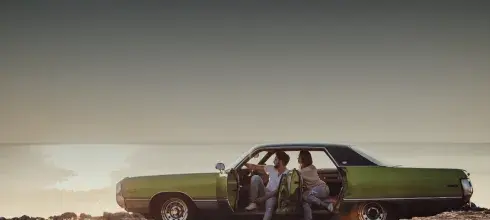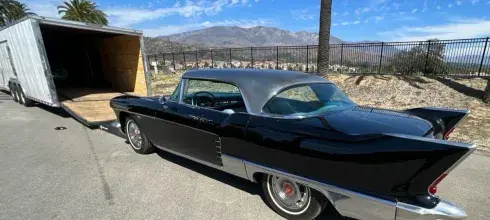
What to Look for When Buying a Used Car
There are many reasons why you should buy a used car compared with a new one. However, the biggest incentive to buying a used car is that it retains more of its original value after you’ve bought it. That’s not to say used cars don’t suffer from depreciation. The difference is that it happens at a much lower rate than for a new car.
That being said, buying a used car can still be risky as there are so many lemons out there. If you want to reduce the risk of buying one of those lemons, we’ve created a “What to look for when buying a used car checklist” just for you.
Here are the things you should look for when buying a used car.
Mileage
One of the first things you should do when you go to look at a used car you’re thinking about buying is to sit in the driver’s seat and inspect the odometer. You should always find out how many miles a used car has been driven.
A car with high mileage is more likely to have underlying problems and you’ll end up having to fix them, often at great expense. This shouldn’t put you off buying it, but it’s something to take into consideration.
You can expect a car that was manufactured before the 1990s to last an average of 100,000 miles. Cars manufactured after the 1990s should last much longer, almost 200,000 miles on average.
Modern cars can easily clock up 300,000 miles or more, as long as they are maintained according to the manufacturer’s recommendations.
In terms of the price of a used car, consider its mileage relative to the price. Don’t pay over the odds for a high-mileage car.
Body damage
Closely inspect the exterior of the used car for damage. Check the bumper, front end, doors, and side panels. You’re looking for dents, worn paint, and deep scratches.
Such damage is not just an eyesore, it’s also going to be expensive to repair. If the seller didn’t disclose the damage you should ask if they will fix it or lower the selling price of the car so that you can fix it yourself.
Headlights and taillights
Shopping for a used car is something that’s usually done during daylight hours which means you might forget to check the headlights and taillights. However, when night falls and you can’t see the road, you’ll soon realize your mistake.
Before you buy a used car, turn on the headlights to make sure they’re in good working order. If the headlights or taillights aren’t working, you might only need to purchase a replacement bulb at the cost of around $20. However, the fault could be more expensive to replace. For example, a bad headlight or taillight assembly can cost between $200 and $700 to replace.
Engine lights
The check engine light or malfunction indicator lamp (MIL) is an integral part of a car’s engine control unit. You’ll find it on the dashboard of the car and if it’s flashing in short intervals when you turn the ignition, you’ve got problems.
A flashing engine light indicates a severe problem has been detected. If the light is solid, then a minor problem has been detected.
When you spot this light, ask the seller if they know why it might be illuminated. It could be something simple such as a loose gas cap. However, it could also be something far more serious and expensive to fix such as a clogged catalytic converter.
Engine oil
Don’t be afraid to pop the hood and check the engine oil. It’s a simple process, but you’ll need a clean paper towel or cloth. First, remove the dipstick and wipe it clean. Then reinsert it back into the engine and remove it again. If the oil is lower than the “low” mark, there’s not enough oil in the engine.
The oil level could be low because the owner didn’t fill it up enough when it was last changed. However, it could also indicate a more serious problem such as an oil leak.
As well as the level of the oil, you should also pay close attention to the color of the oil. If it’s a light brown, amber color when the engine is warm, the oil is healthy. The color of the oil in a cold engine should be a slightly darker amber.
Oil that is black indicates that it contains a substantial amount of contaminants or that it’s been overheated at some point.
How To Check Dipstick & Engine Oil
Transmission fluid
Much the same as the engine oil, a used car’s transmission fluid should always be checked to see whether it’s low. The transmission fluid is what lubricates the gears and parts inside the transmission.
If the fluid level is low, it could be a leak in the system, or the previous owner didn’t bother to check it and top it up according to the manufacturer’s recommendations.
You check the level of the transmission fluid by pulling the dipstick and seeing how far the oil goes up.
Climate control system
You might not think this is all that important but if it’s not working, you’ll soon appreciate how vital a functioning control system is.
If you want to make sure you’re not left sweating in the winter or freezing in the winter, always inspect the car’s climate control system.
Turn the air conditioning system on and set the dial to the coldest setting. There should be cold air coming out of all the vents. Next, turn the dial to the hottest setting and there should be warm air coming out of all the vents.
If cold or hot air isn’t coming out of the vents, it indicates that there is a problem with the car’s air conditioner or the heater core. Either way, it could be expensive to fix.
Tire tread
A comprehensive list of what to look for when buying a used car will always include checking the tires. You’re looking for how much tread there is left because if they’re too worn you’ll need to replace them.
A set of new tires may not be cheap. You could pay between $50 and $150 per tire, depending on the size, brand, and type.
To check the tread, you’ll need a tire depth tool. If there are less than 0.0625 inches of tread left, you’ll need to replace them. Another way to check the depth of the tread is with a penny. Place it head-first into the tread and if Abraham Lincoln’s head is completely concealed, you won’t need to replace the tires.
Suspension
The suspension system in a car consists of struts or shocks, springs, connectors, and other components. This part of the car is responsible for absorbing shock and creating a smooth ride. A bad suspension system could cost between $300 and $1,500 to replace, depending on the car.
To check the condition of the suspension you really need to take the car for a test drive. The car should drive smoothly and quietly, especially when you drive it over bumps and turn corners. Any unusual noises such as a grinding noise or squealing or heavy bumps could be an indication that the suspension is worn.
Exhaust gas
This is something you should check in person. However, if you’re buying a used car online and getting it delivered, you may be able to ask the seller to send you a video. The color of the exhaust gas provides a fair insight into how well the owner maintained it.
Obviously, the car needs to be running and you need to walk around to the rear and see what’s coming out of the tailpipe. A healthy engine will emit a colorless exhaust gas.
If the exhaust gas is white, it may be the result of a blown head gasket or warped cylinder head.
If the exhaust gas is black, this is a sure indication of a neglected car. Exhaust gas tends to be black when the engine burns too much fuel. This could be caused by clogged fuel injectors, malfunctioning sensors, or a dirty air filter.
Interior
You’re going to be spending a lot of time sitting inside the car if you decide to buy it. Therefore, it makes sense to look carefully at the interior. If the outside of the car is pristine, it doesn’t necessarily mean the interior will be the same.
Open the car doors and take a close look inside. If you’re buying the car online, ask for a live video tour. You’re looking for damage to the seats, headliner, door panels, and other areas. If you’re a non-smoker, you might also look for signs that the previous owners smoked while driving it. Cigarette smoke odor is impossible to eliminate completely, so bear this in mind.
Radiator
The radiator in a car helps to keep the engine temperature in check. It’s a critical component because it protects the engine from overheating. It is made up of a series of tubes through which a coolant liquid flows. As the coolant flows through the radiator, fans spin to cool it with air.
If you’re wondering what to look out for when buying a used car, make sure you include a check of the radiator on your list. Problems with the radiator can be expensive to fix.
Lift the bonnet and inspect the radiator, looking for signs of spilled coolant. If it’s a fresh spill, there will be a blue or green liquid. If the spill is an old one, the coolant will have dried and evaporated, leaving a white powder.
Both are a problem because coolant only escapes if there’s a problem with the car’s cooling system.
Now you know what to look for when buying a used car, we hope it hasn’t put you off making such a purchase. As long as you take your time and make the necessary checks, there’s no reason why the used car you purchase doesn’t give you many years of happy driving.
If you’re ready to make a purchase but aren’t sure how you’re going to get the car home, consider one of our auto transport services. It doesn’t cost as much as you might think, but you get peace of mind knowing your car is going to arrive on your doorstep in great condition.
To find out the cost of shipping a car, spend a few minutes using our online quote calculator.
Alternatively, you can speak with our shipping advisors at (864) 546-5038 or use our Live Chat option.
FAQs
What signs to look for when buying a used car?
There are numerous things you should look for when buying a used car. For example, check the condition of the exterior, interior, dashboard, engine, tires, and brakes. In addition, ask for the vehicle history report, the title status, and the ratings of the car model.
How much mileage is too much for a used car?
There is no definitive answer to this question because it depends on so many factors such as the age of the car, its condition, maintenance history, and the driving habits of the owner. However, a good rule of thumb, suggested by many experts, is an annual average of 12,000 miles or less.
How do you know if a used car is reliable?
There are a number of ways you can check the reliability of a used car before you buy it. They include:
- Looking at the service history to check whether it’s been maintained properly
- Performing a visual inspection and checking for signs of damage, rust, leaks, or wear
- Test driving the car and paying close attention to how it drives, feels, and sounds
- Checking the reliability ratings and owner satisfaction scores of the car model
What should you look for under the hood when buying a used car?
When it comes to looking under the hood, check the following before you buy a used car:
- Signs of damage, rust, leaks, or cracks
- Color and level of fluids including transmission, oil, and coolant
- Condition of hoses, wires, and belts
- Battery terminals and cables
What are some red flags when buying a used car?
Red flags to look out for when buying a used car include:
- A car being sold for significantly less than its market value
- A car with rust on the body or undercarriage
- A car with a specific type of accident history, such as flood, fire, or frame damage
- A seller who is not the owner of the car, or who is in a different location
- A seller who asks you to pay in advance or through a wire transfer







